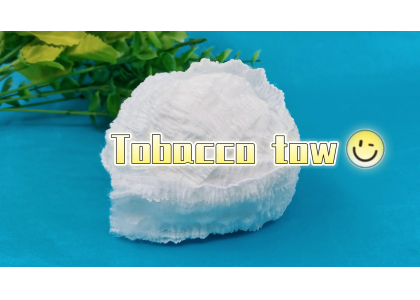
With the continuous development of the social economy and the improvement of the quality of life of consumers, the serious development of the earth's resources, global warming and the depletion of oil resources and other environmental pollution and energy shortages are becoming more and more serious. Therefore, non-petroleum-based degradable materials have attracted increasing attention in recent years. Among many biodegradable materials, polylactic acid, as a new environment-friendly polymer material, has gradually attracted people's attention.
Polylactic acid is also known as polylactide. The raw material comes from food crops or crop straw cellulose. The source is sufficient and renewable. The products made of it can be directly composted after being discarded, and finally can be completely degraded and re-enter the plant. Photosynthesis realizes the cycle in nature. Therefore, it is an environmentally friendly, green and sustainable polymer material.
Compared with natural fibers such as traditional polyester and cotton, polylactic acid is environmentally friendly, non-toxic, degradable; antibacterial, anti-mite, anti-allergic; skin-friendly, flame-retardant, non-moisture, and anti-ultraviolet.
(1) Environmental degradation performance
Polylactic acid product waste can be completely decomposed into carbon dioxide and water in 3 to 6 months under industrial composting conditions (temperature 58°C, humidity 98% and microbial conditions), and 1 to 2 years in a natural environment, which has very good environmental protection Effect. Polylactic acid products come from nature and return to nature. The development and application of its products is also one of the effective ways to solve white pollution, and has good social and economic benefits.
(2) Safety performance
Since lactic acid, the degradation product of polylactic acid, is a substance contained in the human body, it can participate in metabolism and finally decompose into carbon dioxide and water, so it will not cause toxic and side effects to the human body and is very safe to use. Polylactic acid has been used in many aspects such as medicine and pharmacy, such as surgical sutures (introduced in 1975), drug slow-release systems, bone nails, tissue scaffolds, and medical health materials such as bandages and gauze.
(3) Antibacterial and anti-mite properties
Since polylactic acid is polymerized from lactic acid, the surface of the material is weakly acidic, which can inhibit the growth of microorganisms. Therefore, it has natural and stable antibacterial and anti-moth effects, and is especially suitable for bedding and medical and sanitary products, such as quilts. , Sanitary napkins, panty liners, diapers, medical gauze, bandages, dressings, medical sheets, etc.
(4) Moisture-conducting and breathable performance
The public moisture regain of PLA is 0.6%, which is not moisture regain compared with 8.5% of cotton and 13% of viscose, but it has a unique wicking effect. The fabric has good moisture-wicking and quick-drying functions and good air permeability. After the human body sweats, the clothes will not stick to the skin like cotton and make people uncomfortable, but can export sweat to make people comfortable. In addition, the surface of PLA material is weakly acidic, and the skin of healthy people is also weakly acidic. Therefore, it has good compatibility with the human body, good skin affinity, and will not cause skin allergies. It is especially suitable for bedding, sportswear and other products.
(5) Flame retardant, less smoke performance
Compared with traditional materials, polylactic acid has the advantages of being flame retardant (the limiting oxygen index is close to the national standard's requirement of 28%~30% for flame retardant fibers), even if it burns, it has the advantages of small amount of smoke and no black smoke, especially suitable for home improvement items such as carpets, curtains, wall coverings and decorative materials in public places.
(6) Anti-ultraviolet performance
PLA fiber only absorbs light with a wavelength of less than 290 nm, while the wavelength of ultraviolet rays shining on the earth's surface is generally greater than 290 nm. Therefore, PLA fiber has good UV resistance. After 500 hours of sunshine, it can still maintain 90% of its strength, especially for the production of outdoor clothing such as sun protection clothing.
Due to its reliable biological safety, biodegradability, environmental friendliness, good mechanical properties and easy processing and forming, it has a wide range of applications in biomedical polymers, textiles, plastics, furniture, agriculture and packaging industries. prospect.
(1) Polylactic acid fiber can be used in clothing, home textiles and other fields, and has the characteristics of environmental protection, skin-friendly, breathable, antibacterial, and flame retardant. main application:
1. Production of polylactic acid yarn, which can be processed into high-grade fabrics after spinning, and can be processed into various styles of clothing, bedding, curtains, carpets, towels and other clothing, home decoration, home textiles and industrial fabrics and other products;
2. Production of polylactic acid non-woven fabrics, which are used to make products such as diapers, sanitary napkins, nursing pads, medical dressings, masks and industrial filter materials;
3. Production of polylactic acid tobacco tow to replace tobacco tow used for internal filtering of cigarette filters currently made of diacetate fiber as the main raw material.
(2) PLA materials can replace petroleum-based plastics (PE polyethylene, PP polypropylene, PVC polyvinyl chloride, etc.), and are environmentally friendly, non-toxic, and degradable. main application:
1. Household plastic products, such as cups, plates, boxes, bottles, bowls, plates, knives and forks, etc.;
2. Engineering plastic products (such as car, boat, aircraft interior and components, etc.), electrical plastic products (such as mobile phone casings, air conditioner casings, computer casings, etc.);
3. Film bag products, such as plastic bags, agricultural film, packaging film, etc. O medical material products, such as surgical sutures, internal stents, bone nails, etc.
(3) Polylactic acid is used as an adhesive to produce bisphenol A-free and formaldehyde-free environmentally friendly wood products, which are widely used in indoor and outdoor decoration, furniture manufacturing, office furniture, desks and chairs, etc.